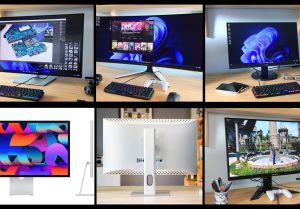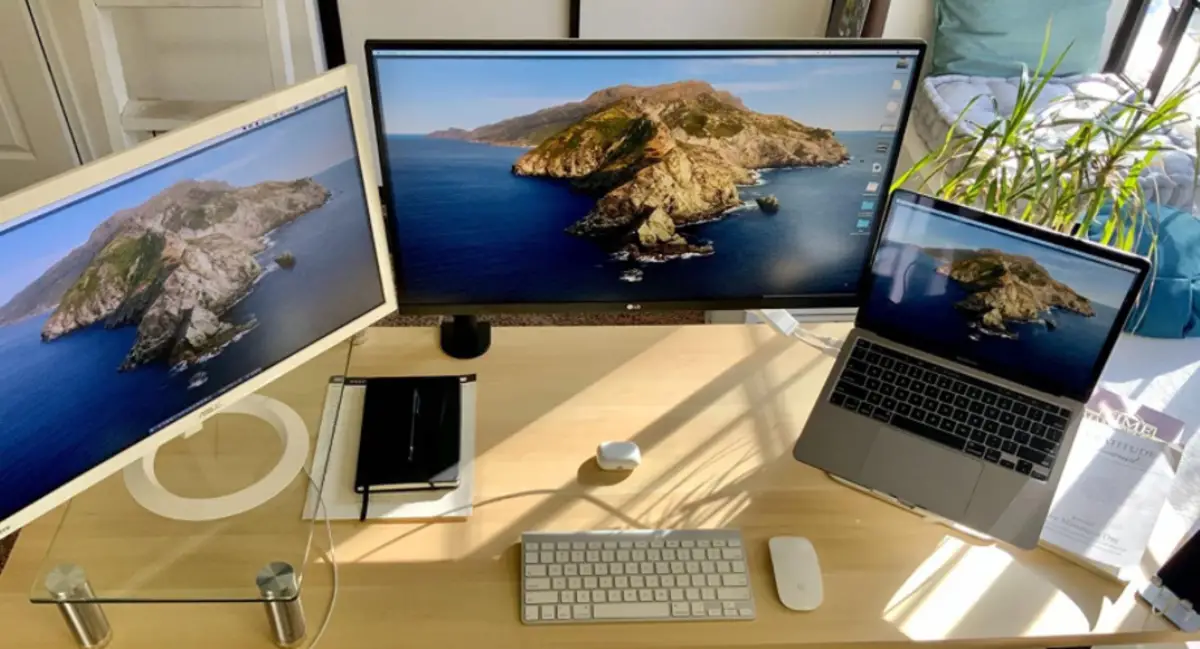The choice of a monitor is rarely given as much attention, which is odd considering how long we spend each day sitting in front of our monitors.
However, because so many different monitors are available, it could be hard choosing the ‘best.’

Over 400 monitors are at a standard level, each with a different display size, resolution, refresh rate, and other features.
Read Also: 5 best laptops for remote work in 2023
How to Select the right monitor for Your Laptop or PC
Let’s break down the main specifications to help you choose the best one.
1. Intended purpose
Remember that the type of monitor you choose will depend on its intended purpose.
A quick-reflex esports player, for instance, will benefit significantly from a high refresh rate gaming monitor, but someone simply catching up on email won’t.
It would be useless to them; a cheaper option is a primary but excellent 1080p 60Hz monitor that does the same thing.
2. Price and budget
Establishing a firm and precise budget is the best course of action when purchasing a computer monitor. Setting a price range reduces the available monitors to a more reasonable number.
It removes the unnecessary options, leaving a smaller selection that can be further reduced to locate the best monitor.
The good news is that high-quality monitors are more affordable than ever, even if you’re on a tight budget.
Now that prices have decreased and technologies have progressed, you may receive much more for your money.
3. Display resolution
Resolution comparison: 1080p, 1440p, and 4K.
The monitor’s resolution is the first technical specification you’ll encounter. It’s the one you need to consider the most because it entirely depends on the capabilities of your PC’s graphics card.
For instance, buying an ultra-high resolution monitor is only helpful if your graphics card can handle 1080p. Today’s three main display resolutions are 1080p, 1440p, and 4K.
Each of them is described in further detail below.
1080p (Most durable)
The basic 1080p “Full HD” model is the most durable monitor.
Even though 4K TVs have essentially replaced 1080p in the TV market, 1080p has held onto a significant portion of the monitor market.
It has a respectably sharp resolution of 19201080 pixels when utilized in a smaller 22–24″form factor. However, the low pixels-per-inch produces a soft, ill-defined image when blown out to 27″ and more prominent.
Compared to 1440p and 4K, 1080p is less sharp but makes up for its affordability and performance. Entry-level graphics cards can readily drive the least expensive monitors available today.
Despite the rising trend of 4K, 1080p is by far the most popular resolution.
Also Read: How to protect your laptop or PC from viruses and malware
1440P: best gaming Monitor
The 1440p resolution delivers a substantial gain in clarity without requiring as much hardware as 4K, with a 2560 x 1440 resolution of 78% more pixels than 1080p.
It’s widely regarded as the ideal resolution between 1080p and 4K. However, 1440p gaming requires a graphics card that is somewhat quick;
ideal choices are mid-range cards like the NVIDIA RTX 3070 and AMD RX 6700. The larger 27-32″ form factor for monitors, which has a higher resolution of 1440p, is better suited.
In terms of pricing, a 1080p monitor may be purchased on a tight budget, but a 1440p display is more expensive.
4K (Best productivity monitor)
4K is likewise called Ultra. The resolution of 4K, sometimes referred to as Ultra High Definition or UHD, is 3840 by 2160 pixels.
Compared to 1080p, this offers four times as many pixels for clear, sharp images. Though this exceptional clarity would make a 4K display necessary, this is not true.
Hardware requirements for streaming 4K movies aren’t too high, but rendering AAA games at native 4K resolution is an entirely different matter.
If you plan to game on it, you’ll need some serious hardware to support a 4K monitor.
High-end GPUs like the NVIDIA RTX 3080 and AMD RX 6800 and above are what we’re referring to. If you’re gaming, we recommend a 1440p display unless you have a high-end gaming machine.
4. Desired size of the monitor
Contrary to popular belief, the proper measurement for a monitor is from one corner to the diagonally opposite corner.
When determining the size of monitor you require, keep this in mind.
5. Monitor panel
There isn’t one “best” panel type; Instead, each has a unique set of advantages and disadvantages.
At the end, it depends on your preferences and the purpose of the display. IPS monitors are the most popular option right now.
IPS monitors are a fantastic alternative in all situations, even though they don’t offer the sharp contrast ratio of a VA or the quickest response speeds compared to a TN.
6. Graphics card compatibility
Once you’ve chosen a monitor, check if your graphics card can support it. A graphics card is necessary for any PC, whether an integrated or standalone type.
However, the majority of PCs lack graphics cards suitable for gaming. The graphics card must be capable of handling demanding software like AAA games.
Otherwise, game performance may be ruined by blurry visuals on the monitor.
For example, if you purchase a 1440p gaming monitor, you will want a graphics card to run games at that resolution.
Also Read: Review of the latest Windows 11 for laptops and PCs
7. Monitor setup and productivity
The majority of folks work with a single monitor setup. However, several individuals are becoming aware of the benefits of using two, three, or even more monitors.
Fujitsu Siemens conducted a study to determine whether a multi-monitor setup improved productivity.
It was discovered that productivity increased by 25% with dual monitors and by 35% with triple monitors compared to one monitor.
You can run multiple apps simultaneously with a dual monitor setup, eliminating the need to often alt-tab or minimize them.
You could have your documents open on one monitor and your emails available on another. Naturally, you’ll need ample desk space for two displays.
However, a two-monitor setup will only set you back a little financially. These days, two 24″ 1080p monitors are reasonably priced.
Your productivity will be maximized with a triple monitor setup, but additional space is needed.
Remember that you can utilize your laptop’s built-in monitor in addition to an external one to add another display to your setup if you use it as your primary computer.

